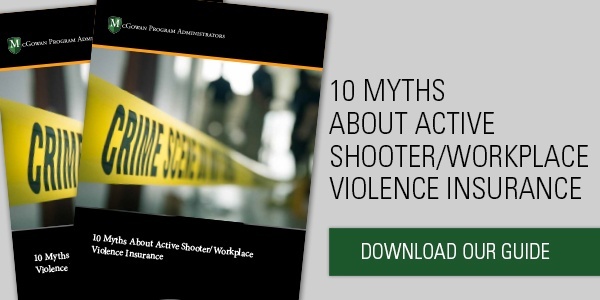Two million Americans report suffering from workplace violence every year, making it the second leading cause of work-site deaths in the country (the leading cause is automobile accidents), according to the Occupational Safety and Health Administration (OSHA). Many more cases go unreported.
The organization defines workplace violence as any act or threat of physical violence, harassment, intimidation, or other threatening disruptive behavior that occurs at the work site, meaning workplace violence does not need to involve physical injury.
With that in mind, which occupation has it the worst among U.S. workers? That’s tough to say, because workplace violence isn’t necessarily related to the actual work being done. It may have something to do with the work environment, but more often it has more to do with the people, as any dispute can get out of hand.
Even so, one insight emergences from the reams of government data on workplace injuries and violence: People in the caring professions experience a much greater proportion of these incidents.
Intentional violence causing days off work
The Bureau of Labor Statistics (BLS) publishes a data category called “intentional injury by other person” in its list of occupational injuries causing days away from work. In 2014, the BLS reported about 16,000 such injuries in private industry across the United States. These numbers are just a slice of the total, as they omit government and other public-sector workplaces.
People working in healthcare and social services make up the vast majority of the incidents the BLS tracks: 11,100 in 2014. Incidents include workers in:
- Hospitals: 3,410
- Nursing and residential care facilities: 4,690
- Social assistance offices: 2,050
Other common occupations prone to workplace violence incidents include:
- Trade, transportation, and utilities: 1,950
- Retail trade: 1,390
- Leisure and hospitality: 1,160
- Educational services (mostly elementary/secondary schools): 810
- Food service and drinking places: 630
- Transportation and warehousing: 510
- Professional and business services: 470
Common threads in workplace violence
Though violence takes many forms across most industries, a few factors are more common:
- Mental and physical health issues. Patients arrive in trauma centers injured and potentially violent. Older adults who have dementia can lose control and injure their caretakers. Mental health workers often suffer sprains, bruises, and back injuries when attempting to restrain clients.
- Alcohol being served. The so-called “mean drunk” can disrupt a nightspot, injuring bouncers and bartenders who try to keep things under control. Drinks also loosen people’s inhibitions and encourage risky behavior that workers must respond to, raising the potential for injury.
- Money changing hands. Robbery is one of the most common forms of workplace violence. Store clerks, barkeepers, cab drivers, bank tellers, and anyone else who handles cash can be considered a target.
Taking a holistic approach to workplace violence
It’s easy to envision a fired worker charging back into the workplace with a gun and a thirst for revenge. Cabdrivers and clerks working the night shift are frequent targets of armed robberies. But don’t forget: The silent halls of a nursing home can be just as hazardous to workers. You can’t presume to know the source of workplace violence: it can happen anywhere.
Men are most often the victims of work-related homicides when the assailant is a robber. For women, however, most work-related homicides are committed by someone she personally knows, whether that be a husband, an ex, or other relative.
Should an incident occur where an estranged lover or spouse shows up at a workplace and raises havoc, any damage could be legally deemed a domestic violence incident, potentially excluding the company or organization from receiving any insurance coverage from worker’s compensation or general liability policies.
This is why policies and insurance specifically geared towards workplace violence are crucial for businesses today. Train your staff to remain alert to a wide range of threats and give them the freedom to report risks without repercussions. And you can develop a companywide workplace violence prevention program, so you’ll have a framework to respond just in case. And for those times when prevention isn’t enough, workplace violence insurance can help defray costs and help employees recover from trauma.
Related articles:
11 Things to Look for in an Active Shooter Insurance Policy
What Happens in the Aftermath of an Active Shooter Situation?
Cameras and Restaurant Liability Claims: Pros and Cons of Video Surveillance



